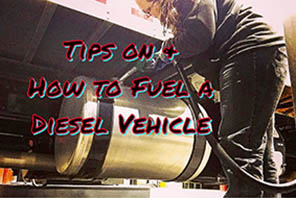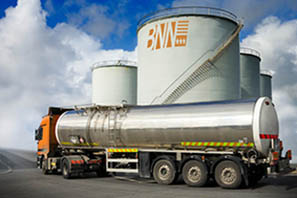One of the best things about being a truck driver is there are many options within the industry for drivers to do what they want. Tanker truck driving is a great example. While it might seem similar to other types of driving, tanker drivers need their own special skill sets and knowledge to do their jobs well.

Many drivers get extra training driving a tank truck due to the special challenges they pose. Driving a tanker isn’t like driving a dry van or reefer, and not all drivers like driving tanks. Before you jump in, you may want to take some time to get trained on food-grade trucks and see if tanker driving is right for you.
The Pros and Cons of Tanker Truck Driving
The most important thing to understand about driving a tank truck is it’s not like any other kind of load. Tankers are challenging and tough to drive.
That said, they also have some advantages that make them a great choice for some drivers.
Advantages of Tanker Trucks
Pay
One of the biggest advantages of driving a tanker truck is that it pays well, especially if you want to pull hazardous materials.
Wait Times
Another advantage to being a tanker truck driver is there’s generally less waiting than with other loads. Unlike dry van and reefer driving, tanker drivers can usually load and unload their trailers themselves. This reduces their downtime and lets them get back on the road faster.
Along with this, tanker drivers also don’t have to deal nearly as much with equipment. With tank driving there are no pallets, straps, or loading or unloading equipment. You’ll still need your regular tools to perform small maintenance tasks. However, you won’t need to wait at a loading dock for workers to secure your load (or break your back doing it yourself).
Scales
One thing many drivers enjoy about driving tanker trucks is they are easier to balance. Tank drivers don’t need to worry as much about balancing their loads across their axles or staying under their GVWR. It is possible to overload a tanker truck, but it’s much less common than with dry vans. And since liquid loads tend to move while you drive, balancing it across your axles doesn’t make much difference.
Less Physical Work
Finally, many tanker drivers appreciate that loading and unloading tanks is less physical than loading a flatbed or dry van. You’ll still have to crank landing gear and hook up air hoses, but you won’t need to strap or tarp loads on a windy day. Many tanker drivers have been driving for decades and still enjoy the work as much as they did when they started.
Disadvantages of Tanker Trucks
Surge
One of the biggest downsides to driving a tanker truck is that they’re not easy to drive. Unlike a dry van or flatbed, a tanker’s load moves and shifts with every turn, stop, and lane change. Many drivers refer to this as “surge” - the feeling of the liquid in the tank sloshing when the truck moves.
Surge can make it feel like your truck is accelerating too slowly or like it won’t stop fast enough. It can also throw your whole truck off balance if you take a turn too quickly.
The key to driving a tanker safely is patience and control. You need to keep your speed low in order to drive safely, and you need to practice in order to learn how to beat the surge. These are skills that you’ll get better with over time, but training and experienced help can also make it easier.
Protective Measures
Another disadvantage of driving tanker trucks, at least with hazardous materials, is the need to take special safety precautions when loading, unloading, or driving. Depending on the materials these can vary considerably. You may need to wear a respirator while pumping product in or out or even wear a full PVC protective suit.

Boost your business with professional advertising today.
For more information, or a free quotation please contact us today
























 truck hauling crops out of his 180 acres, and then he parks it for 10 months of the year, he should buy used.”
truck hauling crops out of his 180 acres, and then he parks it for 10 months of the year, he should buy used.”














